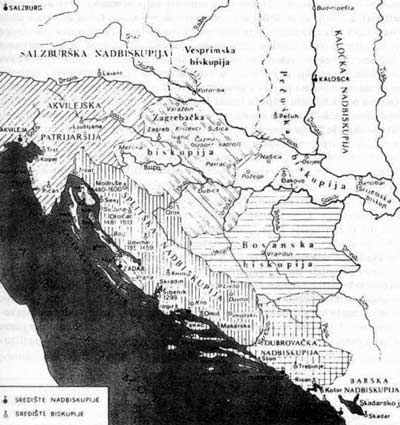Web catalog
Most read
Most read last 7 days
Most Discussed
Top rated
Statistics
- Total registered users: 9565
- Total articles: 23656
- Total comments: 2087
- Last entry: Kebo presenting evidence that Izetbegovic brought mujahideen to Bosnia
- Last update: 11.01.2019. 23:44
The Franciscans
Written 27.11.2009. 12:32
 In evaluating the role of the Franciscan order in medieval Bosnia, the fact that the western church had an earlier presence in Bosnia, a long time before the arrival of the Franciscans, shouldn\\\'t be ignored. As was pointed out earlier, the heretical "Bosnian church" itself grew out of the Bosnian Catholic diocese.
In evaluating the role of the Franciscan order in medieval Bosnia, the fact that the western church had an earlier presence in Bosnia, a long time before the arrival of the Franciscans, shouldn\\\'t be ignored. As was pointed out earlier, the heretical "Bosnian church" itself grew out of the Bosnian Catholic diocese. As the dualist heresy in the first half of the 13th Century gradually developed into an independent "Bosnian church", so grew the attention of the Catholic Church towards Bosnia, beginning with the rejection of the Heretic principles by Ban Kulin at Bilino Polje in 1203 until the Crusades led by Duke Koloman against Ban Matej Ninoslav between 1234 and 1239.64 It is important to point out that the origin of all Catholic initiatives was outside of Bosnia. Catholic initiatives were not led by people who called Bosnia home, be they the Pope\\\'s emissary Ivan de Casamaris in 1203 or the inquisition led by the Dominicans. The activities of the Franciscans were markedly different. They didn't just come to Bosnia. They stayed there, made it their home and built numerous convents. Their activities were an integral part of Bosnian history.
According to data from 1375 collected by Bartol Pizanski, Franciscan convents in Bosnia could be found in Sutjeska, Visoko, Lasva and Olovo. The oldest was the convent of St. Nicholas in the village of Arnautovici, near today\\\'s Visoko (medieval settlement Mile). The number of Franciscan convents grew in the 15th Century. Turkish sources from the latter part of the 15th Century mention Franciscan convents in Fojnica, Kresevo, Visoko, Sutjeska, Zvornik, Olovo and elsewhere.65 Such a large network of convents allowed them to play a large part in Bosnia\\\'s cultural and social development.
The Orthodox Church
When contrasted with the strong position of the Catholic Church in mid 15th Century, the role of the Orthodox Church in Bosnia was relatively insignificant. The initial Serb influences, as indicated by first documents on medieval Bosnia, were from 12th Century almost completely drowned out by authentic domestic influences, including the development of the state and the "Bosnian church". The original Bosnia and the parts of the Croatian kingdom annexed up until the reign of Stjepan II Kotromanic, did not have any Orthodox inhabitants. But an Orthodox population could be found in those border regions which earlier belonged to medieval Serbia, and which during the reigns of Stjepan II (east Zahumlje) and Tvrtko I (Podrinje, Travunja) became a part of Bosnia. Only in those border regions, in the east and south-east, which became a part of an enlarged Bosnia, could one find Orthodox churches and convents.68 In the real, central core of Bosnia, the dominant force was Catholic-Heretic dualism, which was eventually weakened by the Catholic Church by the mid 15th Century.
























































 Kontaktirajte nas
Kontaktirajte nas
No comments